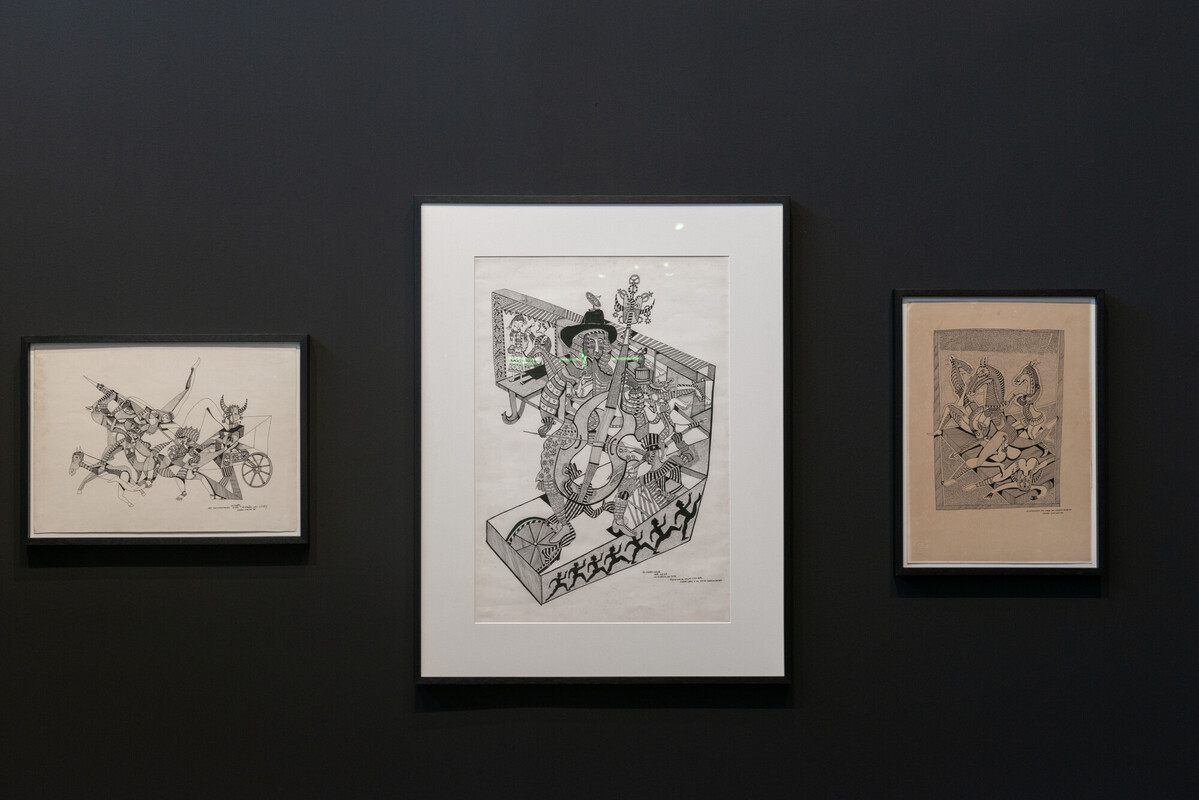
Nadal Walcot
In the act of repetition lies the power of variation. In this theater of memory’s shadows, images come and go, but they are never the same, because, in detail, everything is something else. The grip that tilts the machete when cutting the millionth sugar cane, the hip spiraling in street dances, year after year, the hand bending to the imperious will of a drawing that demands more physical effort and more ink on paper. Nobody does the same thing twice: that’s everyday life. In the cane fields, in the cities, or in the studios. The Dominican artist Nadal Walcot (1945–-2021) was actively aware of this state of affairs – without concealing his debt to M.C. Escher. Walcot, who had learned many languages in his youthful trade as an interpreter, ended up operating another kind of translation: from everyday scenes into the language of drawing. The smoking locomotives, the exploitation of labor in the sugar mills, the plotting and transactions of trade in the ports. The landscapes are always human, even if we only see the figure of a train. As a child, Walcot used to sneak into a wagon and spend days away from home, only to be flogged by his grandmother on his return.
In dance, too, the intelligence of his line is displayed, including when he incorporates and recreates the expressions of cocolo music and dances (a term used in the Dominican Republic to designate Spanish-speaking immigrants from various ethnic groups of African descent in the Caribbean). In these works, the lines of human figures are charged with the same energetic matrix of the cultures that make up the choreographies of personal and collective memory. Thus, from subjects – as well as form – emerge the strength of the contradictions underlying a historical reality, witnessed and modified by an artist who interprets colonial violence but also the euphoria of people at parties; who sees the advance of industrialization reaching only the powerful.
igor de albuquerque
translated from Portuguese by philip somervell
Nadal Walcot (San Pedro de Macorís, Dominican Republic, 1945-2021) was an artist whose formation was rooted in Cocolo culture, developed by the descendants of enslaved people in the English-colonized islands of the Caribbean. As a political exile, he lived in Mexico, the United States, and Europe. His work encompassed the visual narration of everyday life and Afro-Caribbean myths.
This participation is supported by Consulado Geral da República Dominicana em São Paulo.

 Português
Português